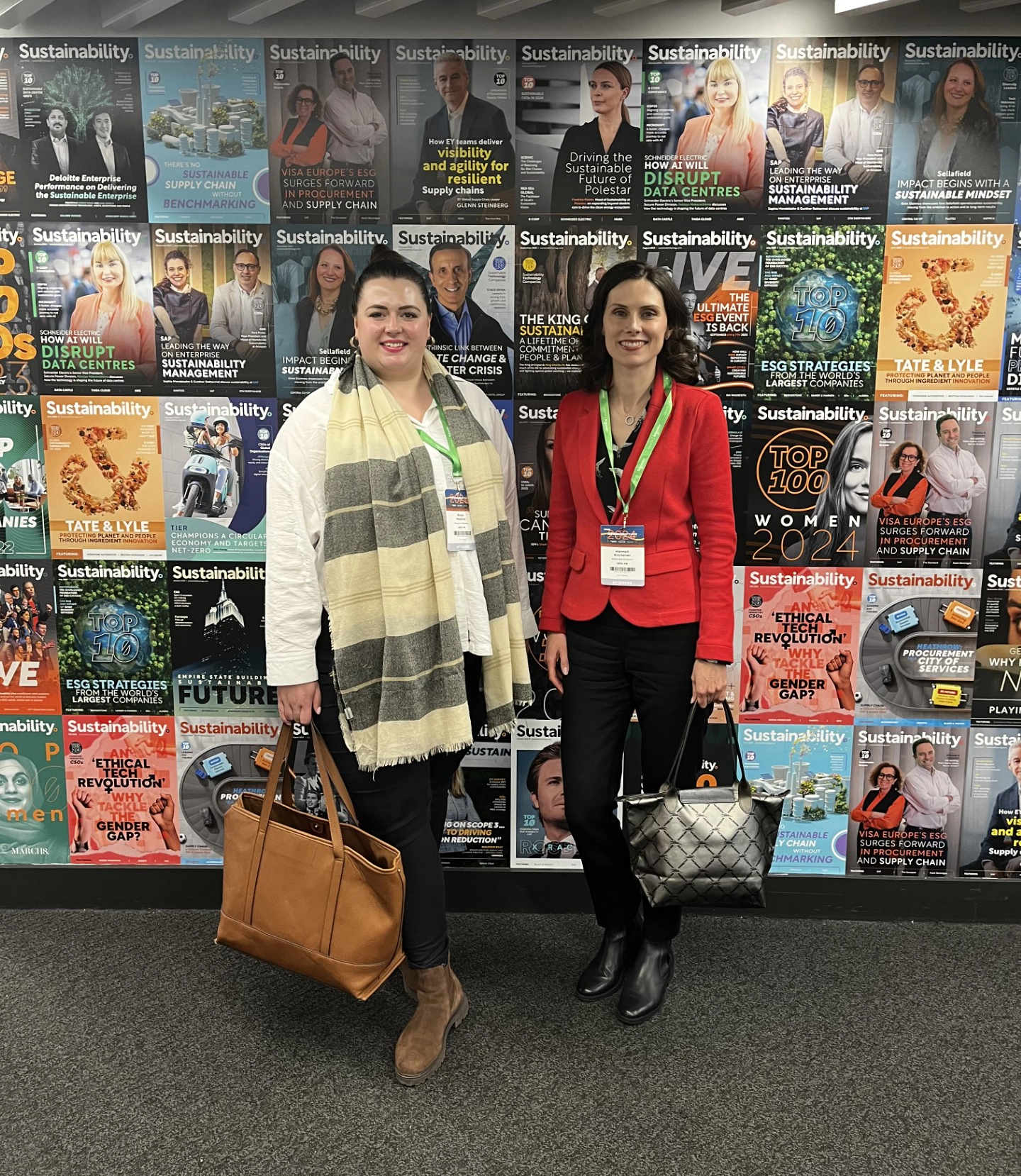
Making a business case for sustainability
There were several themes that stood out to us on the day. The first was that environmental action isn’t something companies can choose to ignore – rather it’s essential for their survival and success. Ulrike Sapiro, chief sustainability officer (CSO) of chemicals company Henkel, spoke passionately about how not taking action could end up costing businesses even more than investing in sustainability and shared some alarming figures about the increasing risks and expenses linked to natural disasters caused by climate change. For example, in 2023 natural disasters worldwide caused around USD$250 billion of losses and that by 2050, up to 28% of a company’s assets could be in danger from natural disasters. This underscores the critical need to articulate the business case for sustainability convincingly, in order to secure buy-in and investment from certain stakeholders.
Leadership opportunities for suppliers
Many businesses have achieved remarkable success over the last few years in reducing emissions from factory processes or company vehicles (scope 1 emissions) or from the electricity purchased to power facilities (scope 2 emissions). The fact that Sustainability LIVE Net Zero dedicated several sessions to discussing scope 3 emissions – those not directly under a company’s control, including from purchased goods and services – highlights today’s growing focus on the more challenging task of decarbonising supply chains now that quick wins have been made.
Several speakers emphasised that their companies will be placing increasing pressure on suppliers in the coming two to five years to engage with carbon accounting, set targets, and share progress. Compliance with these requirements may even become a condition of contracts. In the short term, suppliers who acknowledge the role of their emissions in the value chain, take a transparent approach, and position themselves as informed and flexible partners in carbon reduction will be able to strengthen their existing customer relationships and gain a competitive market advantage. It’s important to note that progress is valued more than perfection on the journey to carbon neutrality.
The right language to engage stakeholders
A final key point that emerged from the presentations and panel discussions at Sustainability LIVE Net Zero was about the language and messages used to engage stakeholders with sustainability. During the session on sustainability and ESG strategies, there was a debate about whether the term ESG (environmental, social, and governance) should still be used, given its association in recent years with greenwashing, politicisation, and investor confusion. Adam Read, CSO of water, waste, and resource management company Suez, advocated for simpler, more straightforward language. He shared how instead Suez talks about its ‘triple bottom line’ – People, Planet, and Profit – which is easier to comprehend and feels more meaningful to people.
Similarly, Nicholas Mazzei, VP for sustainability in Europe at logistics company DP World, emphasised the importance of tailoring approaches to resonate with different audiences. He said that discussing the goal of limiting global warming to 1.5°C probably wouldn’t strike a chord with colleagues at the company’s depots, who likely care more about the issues they see and experience every day. This could be fumes from passing lorries, pollution in nearby rivers, or the decline of local wildlife. He shared how DP World has managed to successfully engage these colleagues with sustainability by addressing local issues and inspiring grassroots initiatives for improvement that can be showcased and replicated elsewhere in the business. This approach of using language that resonates with your audience and addressing issues relevant to them is not exclusive to sustainability communication, however – it’s a fundamental principle of effective PR.
There were many more nuggets of information at Sustainability LIVE Net Zero that sparked enthusiastic discussions between Rosie and me during and after the event. We’re excited about the prospect of incorporating these insights into our work with clients to enhance their sustainability communication strategies. What’s more, we’re also eager to implement some of these ideas internally at SE10 to reduce our own carbon footprint. Many thanks to organisers BizClik Media for inviting us!
Get in touch to discuss how we can help communicate your sustainability progress.

By Hannah Kitchener
Associate Director
About the Author
Hannah is an associate director based in the UK, who leverages her strategic, campaign management, and written content creation expertise to support clients in the construction, energy, and materials handling sectors across Europe, the Middle East and Africa (EMEA). With a professional qualification in Journalism from the National Council of Training for Journalism in the UK, Hannah has strong interviewing and writing skills that enable her to craft compelling content for clients across multiple platforms. Her experience and knowledge of the construction, energy, and materials handling sectors, meanwhile, have helped her build a strong network of trade media contacts across the EMEA region, enabling her to secure meaningful media coverage for clients. In addition to her journalism training, Hannah’s academic qualifications have further honed her ability to communicate across cultures and languages. Having studied French and German at BA level, and with an MA in Translation, Hannah has a passion for inter-cultural communication, which is invaluable to SE10 in executing PR campaigns across multiple markets and in several languages.
